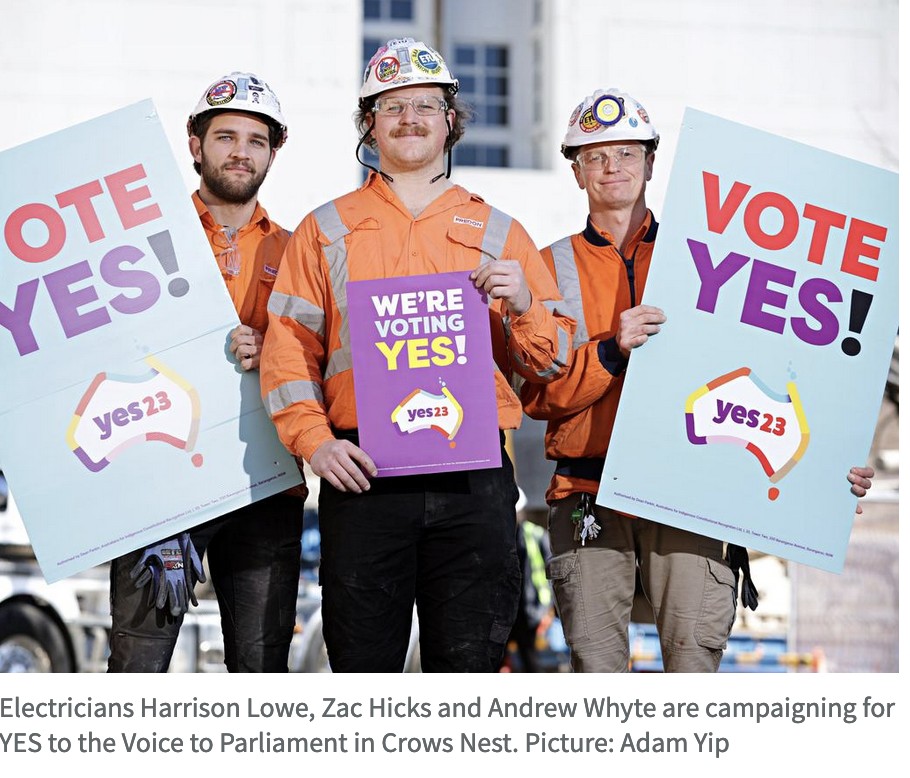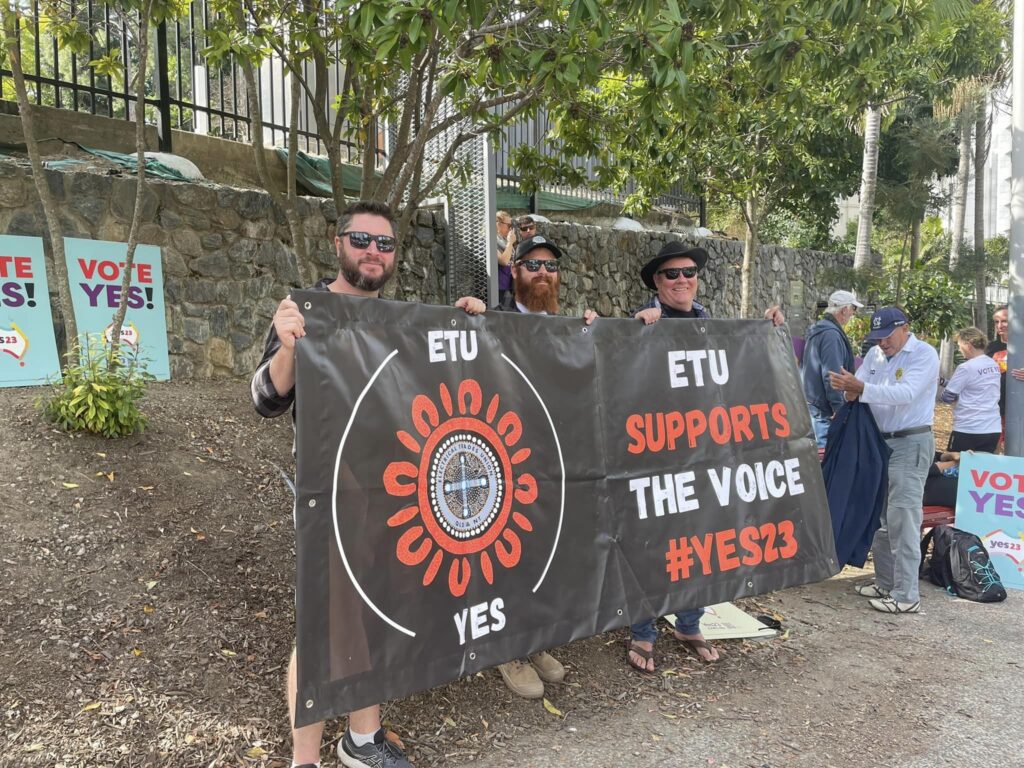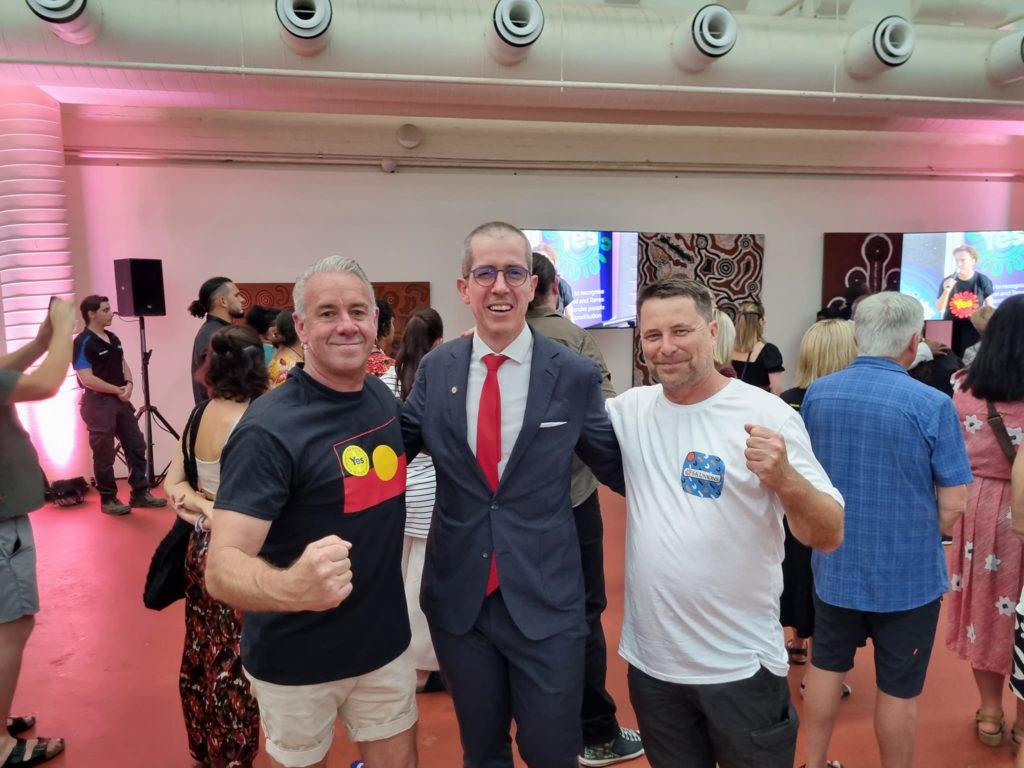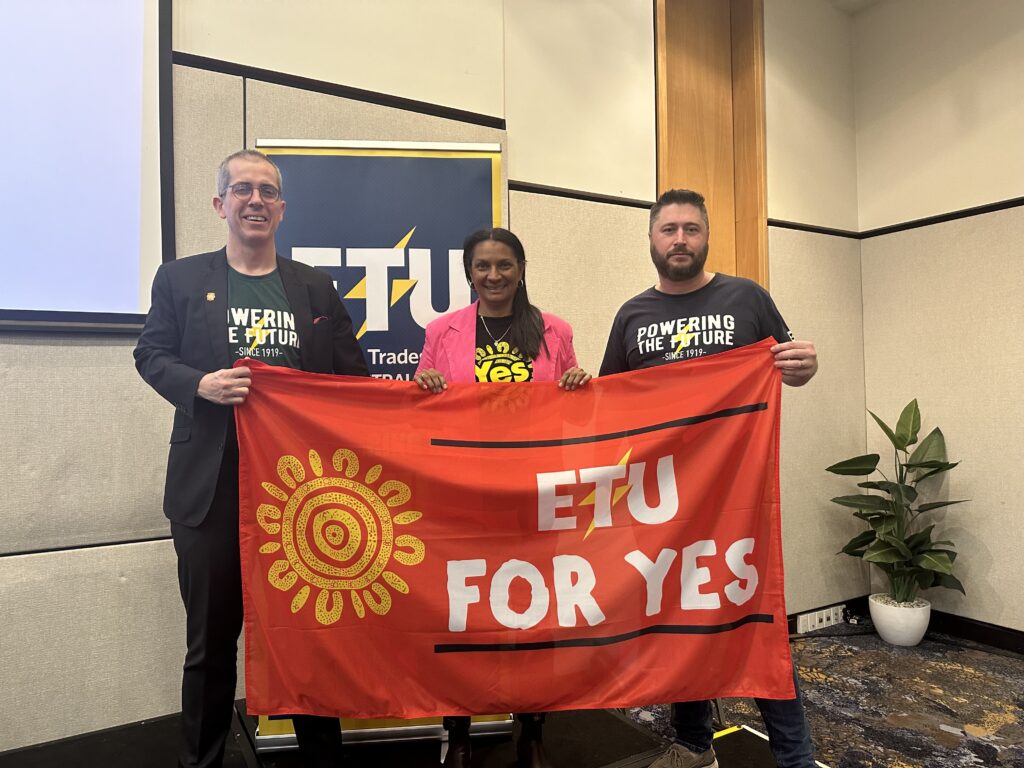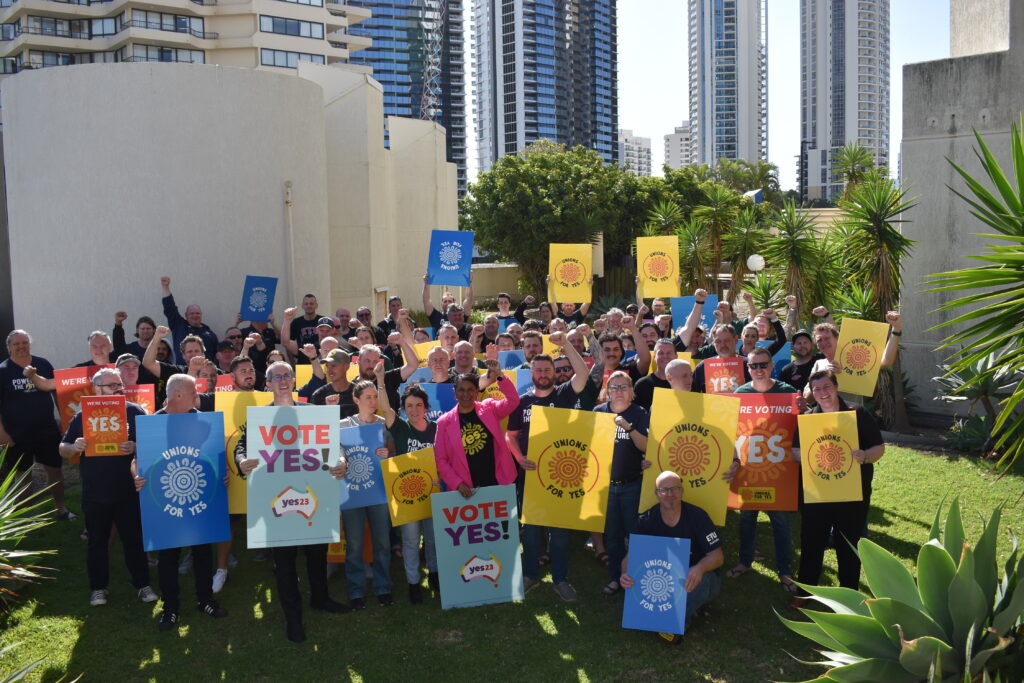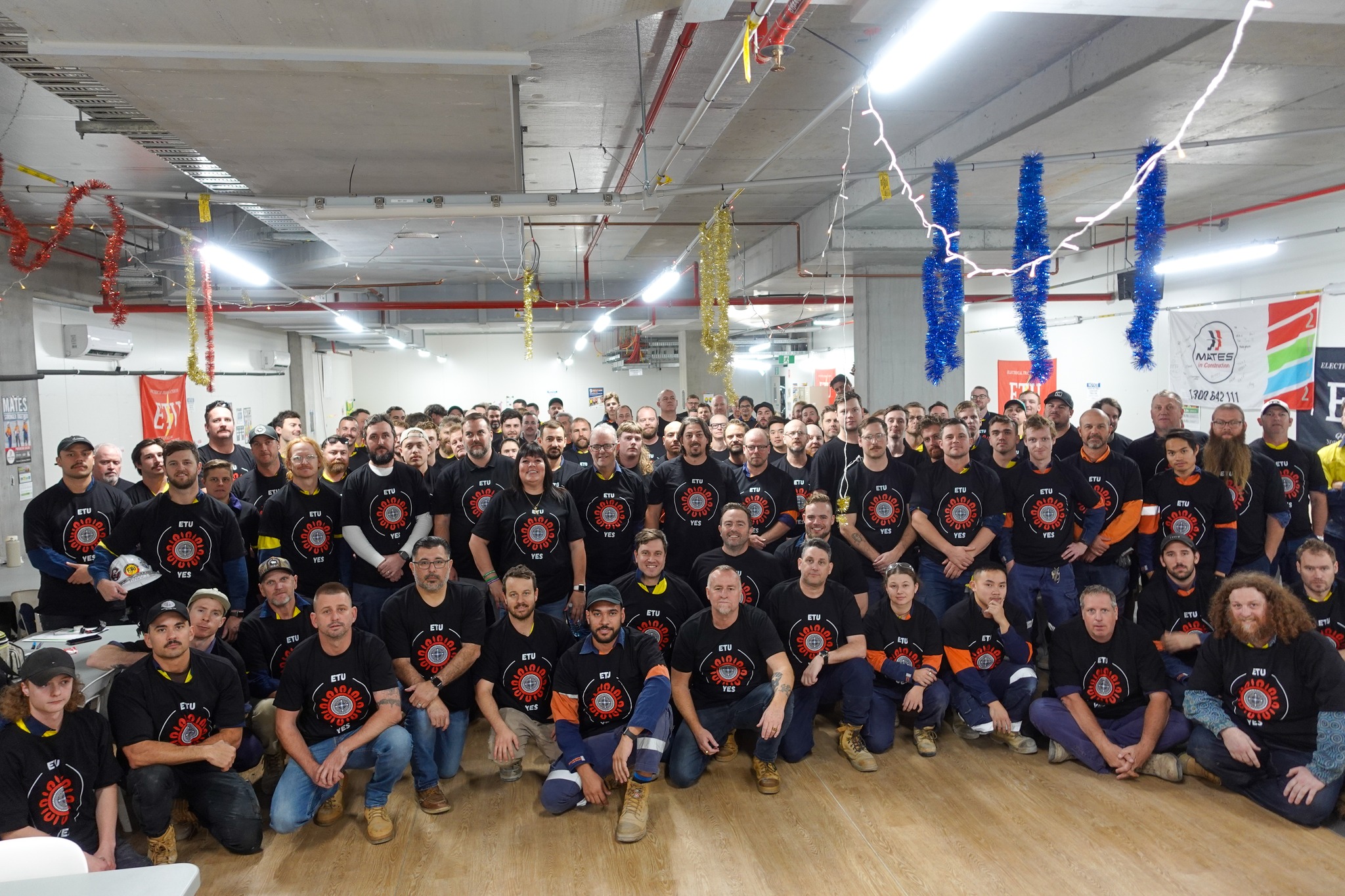By ETU National Assistant Secretary Trevor Gauld
The Albanese Government has announced the date for the referendum on the Voice To Parliament as Saturday 14 October. This is our chance to acknowledge Aboriginal and Torres Strait Islander People as the oldest living continuous culture in the world in our constitution, and allow them to be heard by Parliament about matters that affect them.
Want to find out more about the referendum? Here are some resources:
Uluru Statement from the Heart: Voice Design Principles
Have you ever heard your boss say: “We don’t need to put it in the EBA, we can just make it company policy”?
Who makes your company policies? How much of a say do workers get in creating those policies, making sure they are fair? More importantly, if they are good policies, what stops the boss from simply scrapping them?
Nothing.
Well, the concept of a Voice to Parliament being part of the constitution isn’t that different. Putting the Voice in the Constitution means that it can always be improved, but never just thrown away.
Did you know Australia has had ‘Voices’ to Parliament for over half a century? The problem is, the government of the day has chosen to ignore them, restructure them and even abolish them just because they don’t like what they had to say. Sound familiar?
Let’s take a journey through history…
- In 1967 the Gorton Liberal Government created the first Voice, the Council for Aboriginal Affairs. Headed up by three white public servants, it was the first ‘Voice to Parliament’. It was abolished several years after.
- In 1972 the Whitlam Labour Government created a new Voice, the National Aboriginal Consultative Committee. It was abolished just four years later mostly because of a disagreement about what it should do. Members of the Committee wanted to work with government on policy development for Aboriginal people. The government departments didn’t like that idea and blocked any efforts by the Committee to shape policy.
- In 1976 the Fraser Liberal Government then created another Voice: the National Aboriginal Conference. By 1983, the Conference was in serious decline, had been starved of resources, both in terms of finances and personnel. It was abolished shortly afterwards in 1985.
- From 1990 one of the most prominent Voices was created, the Aboriginal and Torres Strait Island Commission was established under the Hawke Labour Government. In 2001 the Howard Government started removing the powers of the Commission and following a controversial review in 2003 which recommended reforms to give greater control of ATSIC to Aboriginal and Torres Strait Islander people at a regional level, the Howard Government instead abolished it.
- In 2010 the Gillard Labor Government created what was possibly the shortest lived Voice, the National Congress of Australia’s First Peoples. It had barely got started when in 2013 the Abbott Liberal Government was elected and immediately defunded it.
Which brings us to 2015 and the establishment of a Referendum Council by the Turnbull Liberal Government. Over a period of several years, the Council held a series of 12 dialogues with Aboriginal and Torres Strait Island communities from around Australia, central gatherings of Aboriginal and Torres Strait Island community leaders from across the country, which was one of the most proportionally significant consultation processes of First Nations peoples Australia has ever seen.
The outcome was the Uluru Statement of the Heart in 2017 and its call to recognise Aboriginal and Torres Strait Island people in the Constitution, but to do it in a meaningful and practical way, by creating a head of power in the Constitution that requires the government of the day to ensure a ‘Voice to Parliament’ exists, in the same way that our Constitution requires the government of the day to create other institutions such as the courts, our military and even our Parliament. Our Constitution is about principles, it leaves the details to the democratic decisions of the people.
The Constitution does not provide the details of where buildings will be built, how many staff they will have or even how much funding they get. These matters are determined by the Parliament/government of the day. If citizens don’t like how these institutions operate, they can lobby for change or even punish the politicians at the ballot box, but the only way these institutions can be abolished is by a referendum of the people. The same would be true for the Voice if the referendum is successful. Putting the Voice in the Constitution means that it can always be improved, but never just thrown away.
So, if we take this back to our workplaces, would you just accept the boss putting your hard-fought rights and conditions in flaky company policy? Or do you want them enshrined in something much more permanent, something that can only be changed by a genuine democratic vote such as how our EBA negotiations work.
I know which I prefer and that’s just one of many reasons why I am voting Yes to the Voice.
